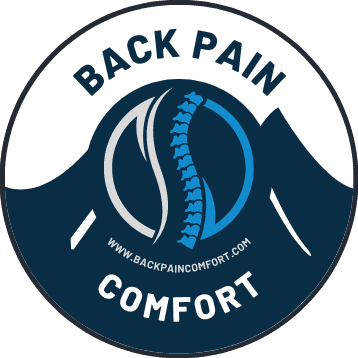
We’ve all felt it – that nagging sensation in our back, whether it’s from sitting too long, lifting something heavy, or just the stresses of daily life. Back pain is one of the most common reasons people seek medical care, and it can truly put a damper on our everyday activities. But did you know that a simple, age-old remedy like massage can offer relief? In this article, we will delve deep into the world of massage for back pain, exploring the different types, techniques, and the real benefits they can provide.
Types of Massage for Back Pain
- Swedish Massage: Often considered the most traditional form of massage, Swedish massage involves long, flowing strokes combined with kneading and tapping. It’s not only great for relaxation but also beneficial for easing muscle tension and promoting blood circulation to the affected areas.
- Deep Tissue Massage: As the name suggests, deep tissue massage targets the deeper layers of muscle and connective tissue. It’s particularly effective for chronic back pain as it breaks down knots and relieves tightness in the muscles.
- Shiatsu: Originating from Japan, Shiatsu is a form of massage where the therapist applies pressure using their fingers, thumbs, and palms in a rhythmic sequence. The idea is to restore the flow of energy and bring balance to the body, thereby alleviating pain.
- Trigger Point Massage: This type focuses on specific areas of tightness within the muscles, known as trigger points. By applying focused pressure and release, it helps to reduce muscle tension and pain.
Techniques for Effective Massage
- Effleurage: This involves long, gliding strokes typically used at the beginning and end of a massage session to warm up and soothe the muscles.
- Petrissage: A kneading action where the therapist lifts and squeezes the muscles. This helps in releasing tension and promoting relaxation.
- Friction: Using deep, circular movements, the therapist can target areas of tension, breaking down knots and promoting relaxation.
- Tapotement: A rhythmic tapping technique, where the sides of the hands are used to break tension and stimulate the muscles.
- Vibration: A shaking motion that helps to loosen tight muscles and increase blood flow.

Real Benefits of Massage for Back Pain
- Pain Reduction: One of the most obvious benefits, massage helps to alleviate pain by releasing tight muscles and promoting relaxation.
- Improved Circulation: Massage increases blood flow to the affected areas, providing oxygen and nutrients that aid in healing and reducing inflammation.
- Stress Relief: Back pain can often be exacerbated by stress. Massage promotes relaxation and reduces cortisol levels, helping to alleviate pain and tension.
- Increased Range of Motion: Chronic back pain can limit mobility. Regular massage can help improve flexibility and movement in the back and surrounding areas.
- Better Sleep: Pain can hinder a good night’s sleep. By reducing pain and promoting relaxation, massage can improve sleep quality.
Why It Works: The Science Behind Massage
Our bodies are intricate networks of muscles, tissues, and nerves. When there’s pain, it signifies that a particular part of this network is under stress or has been injured. Massage works by physically breaking down these areas of tension, releasing built-up toxins, and promoting relaxation. The mechanical pressure from massage encourages increased blood flow, which brings more oxygen and vital nutrients to the affected area, aiding in healing.
Choosing the Right Massage Therapist
While the benefits of massage are undeniable, it’s crucial to choose a qualified massage therapist. A trained therapist will understand the anatomy and physiology of the back, ensuring that the massage is both safe and effective. Always opt for therapists who are certified and have undergone specialized training, especially if you have chronic back issues.

Conclusion
Massage, an ancient healing art, remains one of the most effective ways to address the pervasive problem of back pain. Whether you’re dealing with a temporary strain or chronic discomfort, the various types and techniques of massage offer a natural, non-invasive solution. Not only does it provide immediate relief, but regular sessions can also lead to long-term benefits like improved circulation and flexibility. So, the next time your back cries out for some TLC, remember – a skilled pair of hands might just be the remedy you need. Investing in your well-being through massage is an investment that pays dividends in the form of pain relief, relaxation, and overall improved quality of life.






